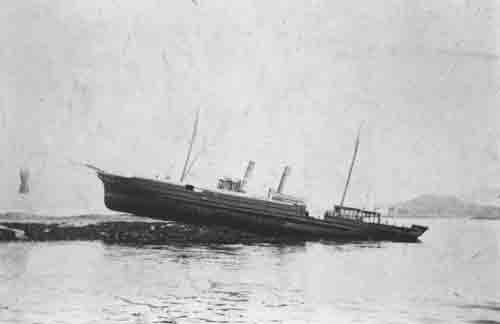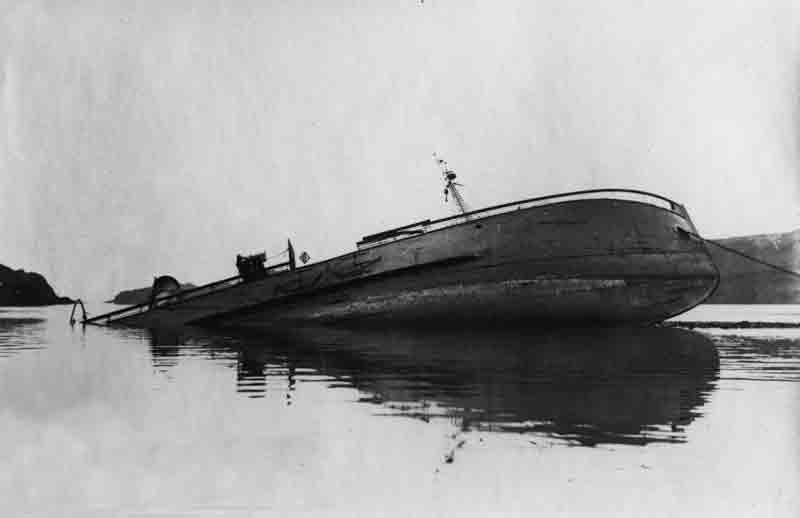One of the largest vessels to be lost on the Galloway coast was the Spanish steamer Paulina while on a voyage from Santander to Troon with a cargo of iron ore. Launched from the yard of Raylton Dixon and Company in Middlesbrough on 19th April 1909 the steel steamship Paulina measured 293.0′ x 47.2′ x 20.0′ and weighed 2672 gross tons, 1387 net tons. She was powered by a triple expansion steam engine by North East Marine Engineering Co Ltd., Sunderland delivering 247 nominal horse power. Her new owners, Cia Montanesa de Navegacion were based in Santander, Spain and intended her for use on east Atlaltic and Mediterranean routes.
Shortly before midnight on 10th February, 1913, as she neared the Scottish coast, she ran into dense fog off Black Head and Corsewall Light, her main navigational fix. She continued north sounding her siren but ran ashore at the north end of Dally Bay around 12:30am the following morning.
The twenty seven crew aboard left the stranded vessel around 2am in two lifeboats, one commanded by the first mate, the other by the master of the Paulina, Captain Rosales. The mate’s lifeboat reached the shore around 7am, as daylight broke, and the thirteen men aboard landed at Dally Bay. The captain’s lifeboat drifted for eight hours before they were picked up by the Glasgow bound steamer Cairo.
Regular reports were received by Lloyds of London during the following week from their agent in Stranraer, noting a gradual deterioration in the condition of the wreck. By 22nd February the agent’s telegram reported substantial buckling and corrugation of her hull with the bow section listing slightly to starboard. Here the reports end and it can only be surmised that she was abandoned as a total wreck. It is clear from the limited remains of the vessel at the wreck site that is was the subject of some major salvage activity in the following years but some scattered wreckage still remains.
The remnants of the Paulina lie south west of the north point of Dally Bay between 8 and 14 metres in approximate position 54°58.436’N, 005°11.135’W. The wreckage is visible, close to the rocky shore, above the surface at certain states of the tide. It is heavily broken as would be expected in this exposed location and is scattered among rocks and sand.
The main items of interest are the engine and boilers which stand proud of the seabed. Boats can be launched in Dally Bay however the track down to the shore is very narrow with frequent bends and launching is across sand.
































